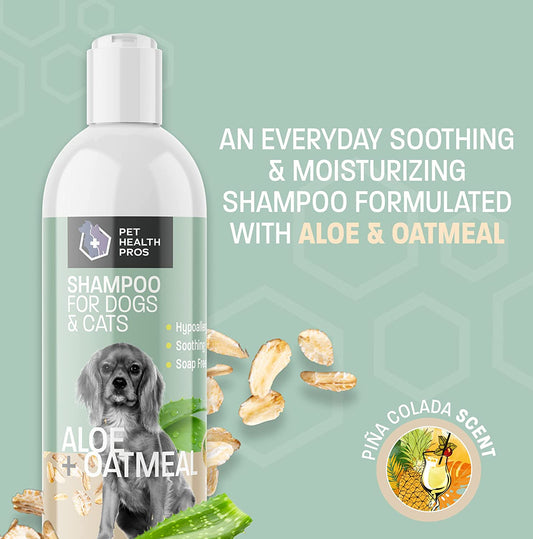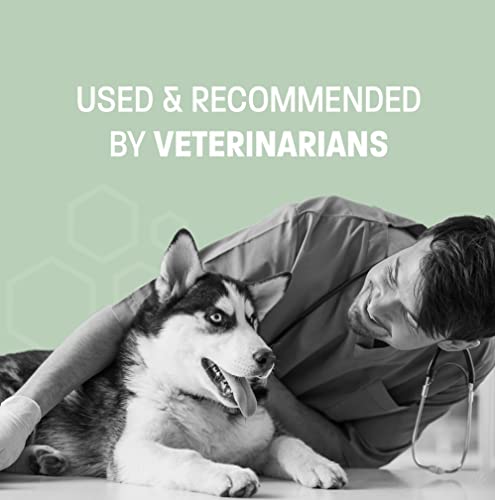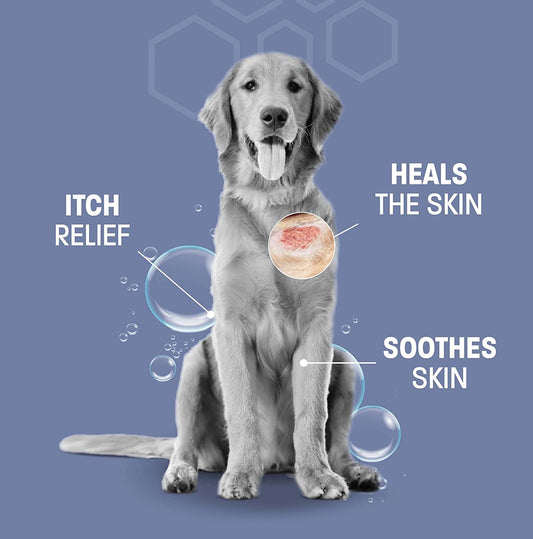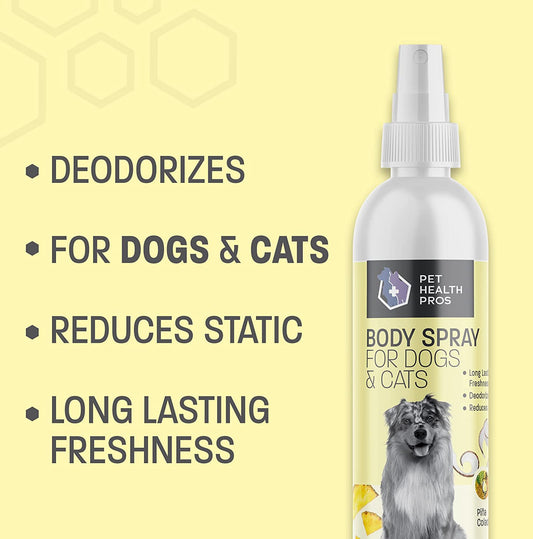When it comes to keeping your dog healthy and happy, their skin and coat play a big role. One way to help with this is by using Ketoconazole Chlorhexidine shampoo. This special shampoo can fight infections and improve your dog's skin. In this guide, we'll break down everything you need to know about this shampoo and how it can help your furry friend.
Key Takeaways
- Ketoconazole Chlorhexidine shampoo helps fight both fungal and bacterial infections in dogs.
- This shampoo can improve your dog's skin health and make their coat look better.
- Always follow the instructions on the label or given by your vet when using this shampoo.
- Watch out for any side effects and contact your vet if you notice anything unusual.
- There are other treatments available for dog skin issues, so talk to your vet about the best option for your pet.
Understanding Ketoconazole and Chlorhexidine
What is Ketoconazole?
Ketoconazole is a powerful antifungal medication often used to treat various fungal infections in dogs. It works by stopping the growth of fungi, making it an effective solution for skin issues caused by fungal infections.
What is Chlorhexidine?
Chlorhexidine is a broad-spectrum antiseptic that fights bacteria and fungi. It's commonly found in pet health products like shampoos and wipes. This ingredient helps to clean and disinfect the skin, reducing the risk of infections.
How They Work Together
When combined, ketoconazole and chlorhexidine create a potent formula that tackles both fungal and bacterial infections. This dual-action approach ensures comprehensive care for your dog's skin, making it a popular choice among pet owners and veterinarians.
Using a shampoo that combines these two ingredients can significantly improve your dog's skin health, providing relief from various skin conditions.
Benefits of Using Ketoconazole Chlorhexidine Shampoo for Dogs
Antifungal Properties
Ketoconazole is known for its strong antifungal abilities. It helps to fight off fungal infections that can cause your dog discomfort. Using this shampoo can help keep your dog's skin healthy and free from fungal issues.
Antibacterial Benefits
Chlorhexidine is a powerful antibacterial agent. It works to eliminate bacteria that can lead to skin infections. This means your dog is less likely to suffer from bacterial skin problems when you use this shampoo.
Skin Health Improvement
Combining ketoconazole and chlorhexidine in one shampoo offers a dual-action approach to skin care. This combination not only treats existing infections but also helps to prevent new ones. Regular use can lead to noticeable improvements in your dog's skin health, making it smoother and less prone to irritation.
Regular use of ketoconazole chlorhexidine shampoo can significantly improve your dog's overall skin health, making it an essential part of their grooming routine.
How to Properly Use Ketoconazole Chlorhexidine Shampoo
Application Instructions
To get the best results, start by wetting your dog's coat thoroughly with warm water. Apply a generous amount of shampoo and work it into a rich lather, making sure to cover all areas, especially the affected spots. Leave the shampoo on for about 10 minutes before rinsing it off completely. This allows the active ingredients to work effectively.
Frequency of Use
The frequency of using this shampoo depends on your dog's specific condition. Generally, it's recommended to use it 2-3 times a week initially. As your dog's skin improves, you can reduce the frequency to once a week or as advised by your veterinarian.
Precautions and Safety Tips
Always avoid contact with your dog's eyes, ears, and mouth when applying the shampoo. If accidental contact occurs, rinse thoroughly with water. It's also important to monitor your dog for any signs of irritation or allergic reactions. If you notice any unusual symptoms, stop using the shampoo and consult your vet immediately.
For optimal results, always follow professional advice and consider the benefits and risks of using this shampoo. Proper application and frequency are key to effectively treating skin conditions like ringworm in dogs.
Common Skin Conditions Treated with Ketoconazole Chlorhexidine Shampoo
Fungal Infections
Fungal infections, like ringworm, are common in dogs. Antifungal medications like ketoconazole are essential for treating ringworm in dogs. This shampoo helps to eliminate the fungus and soothe the skin.
Bacterial Infections
Bacterial infections can cause redness, itching, and discomfort. The antibacterial properties of this shampoo help to kill bacteria and promote healing. It's especially useful for dogs with recurring skin issues.
Allergic Dermatitis
Allergic dermatitis occurs when a dog has an allergic reaction to something in their environment. This shampoo can help reduce inflammation and itching, providing relief for your pet.
Regular use of ketoconazole chlorhexidine shampoo can significantly improve your dog's skin health, making them more comfortable and happy.
Choosing the Right Ketoconazole Chlorhexidine Shampoo for Your Dog
Consulting Your Veterinarian
Before picking a shampoo, always consult your veterinarian. They can help you choose the safest and most effective product for your dog's skin issues. Your vet knows your dog's health history and can recommend the best treatment.
Reading Product Labels
When shopping for shampoo, read the labels carefully. Look for products made with chlorhexidine and ketoconazole. These ingredients are key to treating skin problems right in your own home. Make sure the product is suitable for dogs and check for any additional ingredients that might cause allergies.
Considering Your Dog's Specific Needs
Every dog is different, so consider your dog's specific needs. Some dogs may have sensitive skin, while others might need stronger treatments. Think about your dog's age, breed, and any existing health conditions. This will help you pick the right shampoo for your furry friend.
Choosing the right shampoo can make a big difference in your dog's skin health. Take the time to find the best option for your pet.
Potential Side Effects and How to Manage Them
Identifying Side Effects
When using Ketoconazole Chlorhexidine Shampoo for your dog, it's important to watch for any unusual reactions. Common side effects may include redness, itching, or a rash. If you notice your dog scratching more than usual or if their skin looks irritated, these could be signs of a reaction.
When to Contact a Veterinarian
If your dog shows severe symptoms like swelling, difficulty breathing, or extreme discomfort, contact your veterinarian immediately. These could be signs of a serious allergic reaction. It's always better to be safe and get professional advice if you're unsure.
Managing Mild Reactions
For mild reactions, you can try rinsing your dog's skin thoroughly with water to remove any remaining shampoo. You might also consider using a soothing lotion or cream recommended by your vet. Keeping an eye on your dog's skin and behavior can help you catch any issues early and manage them effectively.
Always consult your veterinarian before starting any new treatment to ensure it's the best option for your dog's specific needs.
Alternative Treatments for Canine Skin Conditions
Other Medicated Shampoos
If your dog has skin issues, there are other medicated shampoos you can try. These shampoos often have ingredients like oatmeal, aloe vera, or sulfur. They can help with itching, dryness, and irritation. Always check with your vet before trying a new shampoo.
Natural Remedies
A naturopathic approach to skin allergies often includes supplements like flaxseed oil, fish oil, B vitamins, or zinc. These can help improve your dog's skin health. Antioxidants like vitamin E can also be beneficial.
Dietary Changes
Sometimes, what your dog eats can affect their skin. Switching to a hypoallergenic diet or one rich in omega-3 fatty acids can make a big difference. Always consult your vet before making any major changes to your dog's diet.
It's important to explore all options to find what works best for your dog's unique needs.
If your dog is dealing with skin issues, there are many alternative treatments that can help. From soothing shampoos to special sprays, you can find a variety of products to ease your pet's discomfort. Visit our website to explore our range of effective solutions and give your furry friend the relief they deserve.
Conclusion
In summary, Ketoconazole Chlorhexidine Shampoo can be a great help for dogs with skin problems. It fights infections, soothes the skin, and keeps your pet comfortable. Always talk to your vet before starting any new treatment. They can give you the best advice for your dog's specific needs. With the right care, your furry friend can enjoy a happy, itch-free life.
Frequently Asked Questions
What does Ketoconazole do for dogs?
Ketoconazole helps treat fungal infections on a dog's skin. It stops the growth of fungi, making your dog's skin healthier.
Is Chlorhexidine safe for dogs?
Yes, Chlorhexidine is generally safe for dogs. It fights bacteria and helps keep your dog's skin clean and free of infections.
How often should I use Ketoconazole Chlorhexidine shampoo on my dog?
You should follow your vet's advice, but usually, it's used 2-3 times a week until the skin problem improves.
Can I use Ketoconazole Chlorhexidine shampoo on puppies?
It's best to ask your vet first. Some shampoos might be too strong for young puppies.
What should I do if my dog has a reaction to the shampoo?
If your dog shows signs of a reaction, like more itching or redness, stop using the shampoo and call your vet right away.
Are there any side effects of using Ketoconazole Chlorhexidine shampoo?
Some dogs might have mild side effects like dry skin or a slight rash. If you notice anything unusual, talk to your vet.









